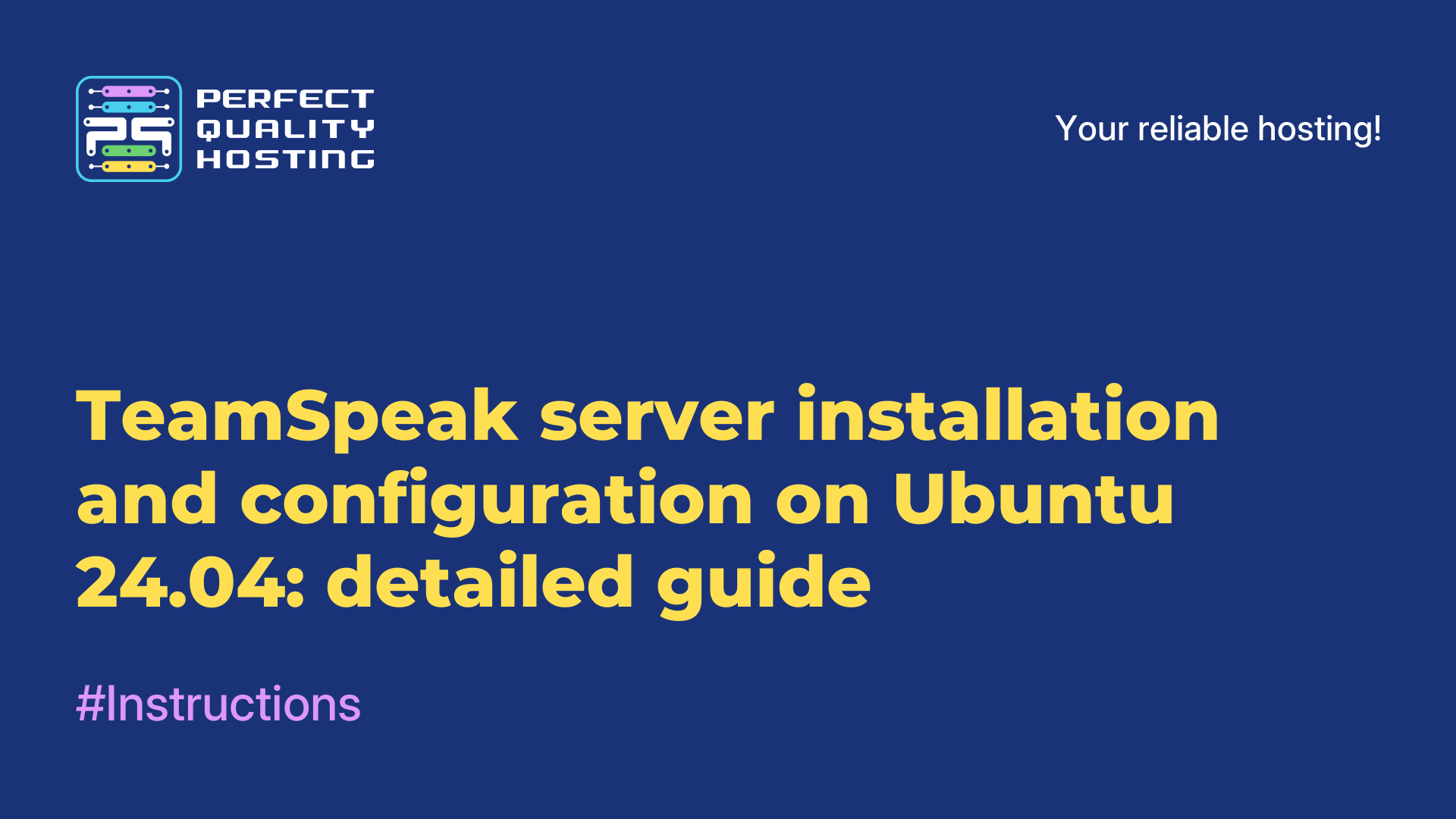-
United Kingdom+44 (20) 4577-20-00
-
USA+1 (929) 431-18-18
-
Israel+972 (55) 507-70-81
-
Brazil+55 (61) 3772-18-88
-
Canada+1 (416) 850-13-33
-
Czech Republic+420 (736) 353-668
-
Estonia+372 (53) 683-380
-
Greece+30 (800) 000-02-04
-
Ireland+353 (1) 699-43-88
-
Iceland+354 (53) 952-99
-
Lithuania+370 (700) 660-08
-
Netherlands+31 (970) 1027-77-87
-
Portugal+351 (800) 180-09-04
-
Romania+40 (376) 300-641
-
Sweden+46 (79) 008-11-99
-
Slovakia+421 (2) 333-004-23
-
Switzerland+41 (22) 508-77-76
-
Moldova+373 (699) 33-1-22
 English
English
Knowledge base — Page 16
- Main
- Knowledge base
- Page 16
To enhance the security of a Windows Server, it's recommended to restrict access to the server. One of the simplest and quickest ways to do this is to allow access only from a specific IP address or range of IPs. This can be achieved by using
A short instruction on installing the TeamSpeakserver, via the pq.hosting control panel.
This guide will help you install TeamSpeak server on Ubuntu 24.04. TeamSpeak is a popular voice and text communication software that is widely used in gamer communities and other collectives. This closed VOIP application allows users to communicate
Gravity is a Tier 1 blockchain designed for mass adoption and the future of omnichannel. Its approach abstracts away the technical complexities of multi-chain interactions by integrating advanced technologies such as zero-knowledge proofs,
Althea - Althea's unique collaborative vision for the Internet takes peering from the data center to the field. It enables communities to build multi-stakeholder networks faster and more affordably than traditional telecommunications models.
Source Network and Decentralized Data (D2) Foundation, the physical embodiment of the ecosystem, are made up of web3 developers who are committed to democratizing data. The network was founded based on the idea of a social movement to give control
Crowd Control is a blockchain-based collectible card game where players can create their own cards and interact with others in the ecosystem. This article provides detailed instructions on how to install and configure a node for the Crowd Control
GaiaNet is a decentralized network providing censorship-resistant, secure and monetizable artificial intelligence (AI) agents.
Jackal Labs is an innovative platform focused on developing solutions in blockchain technology and decentralized applications.











































